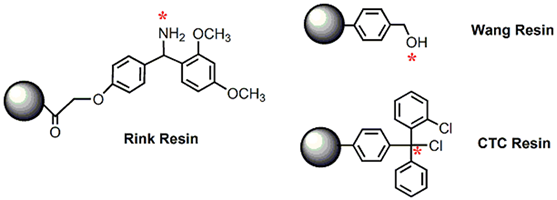Peptide synthesis and choice of resin
There exist several different resins for peptide synthesis but most often are there are used Wang resin, Rink resin or CTC resin. Wang resin gives the most stable bond between between the peptide chain and the resin, which gives much more consistent yield of the crude peptide. CTC resin, is very sensitive. The temperature and humidity during the reaction, as well as the swelling and shrinking of the resin between washes, can affect the stability of the bond between the peptide chain and the CTC resin, which can give variation of the yield of the crude peptide. CTC resin is however, still frequently used for peptide synthesis because CTC resin has its own unique advantages, especially for peptides that have cysteine, histidine or proline in the C-terminal position. The reactivity of the functional group on CTC resin is very high. The first amino acid can be coupled to the resin without activation of the carboxyl group, which minimize the risk for racemization of the first amino acid. This property of the CTC resin is very helpful when for example making peptides that have cysteine or histidine as the C-terminal amino acid, because these two amino acids are prone to racemization. Furthermore, there are also a range of other advantages of CTC resin.

Structures of resins most commonly used in Fmoc peptide synthesis method.



